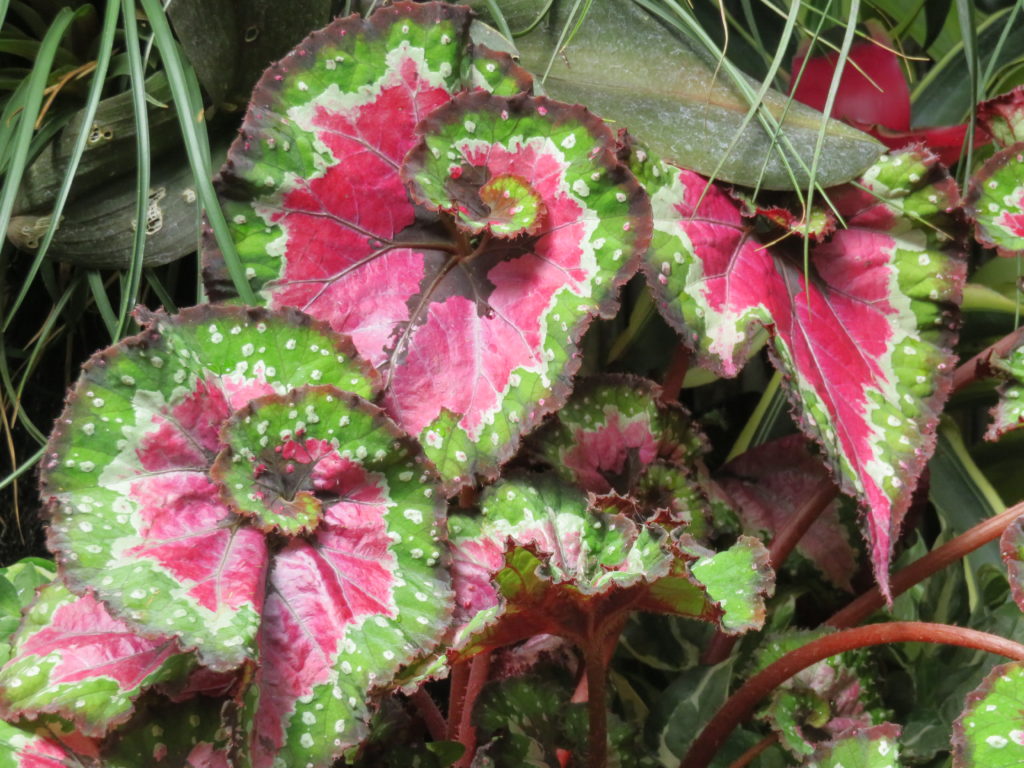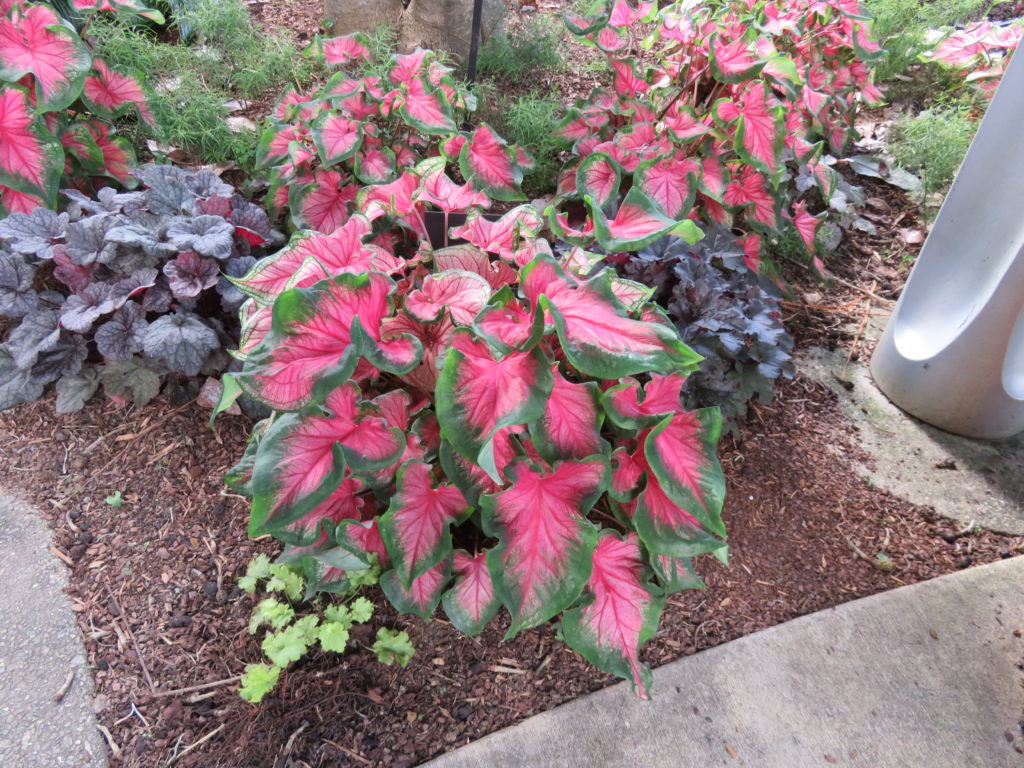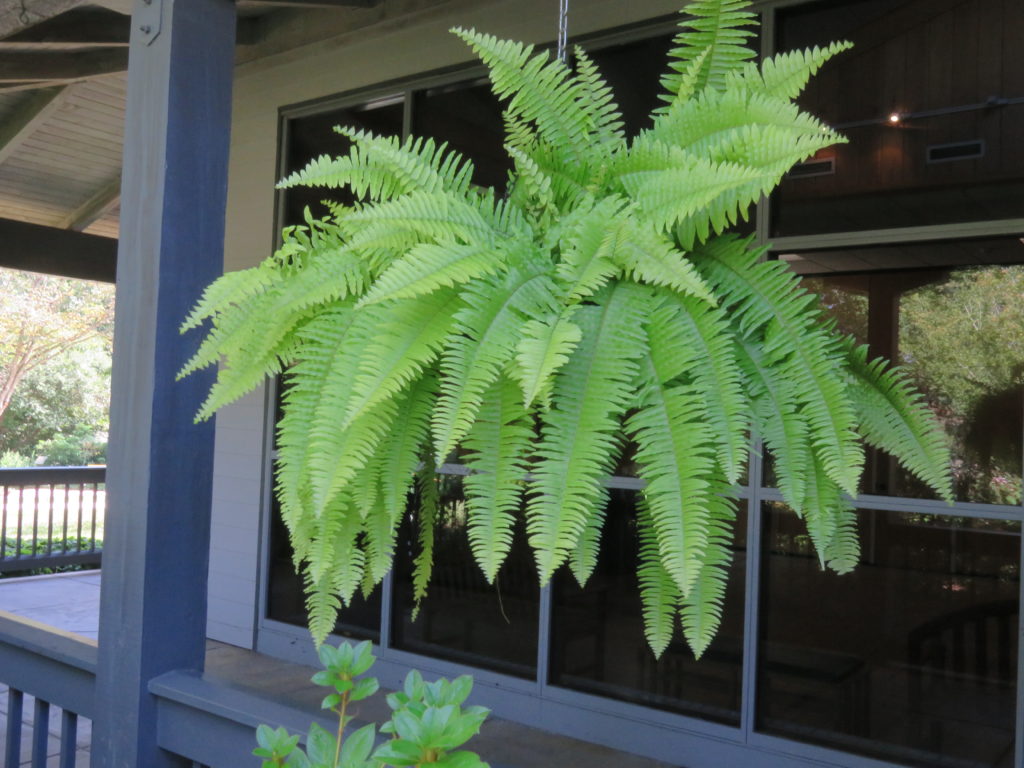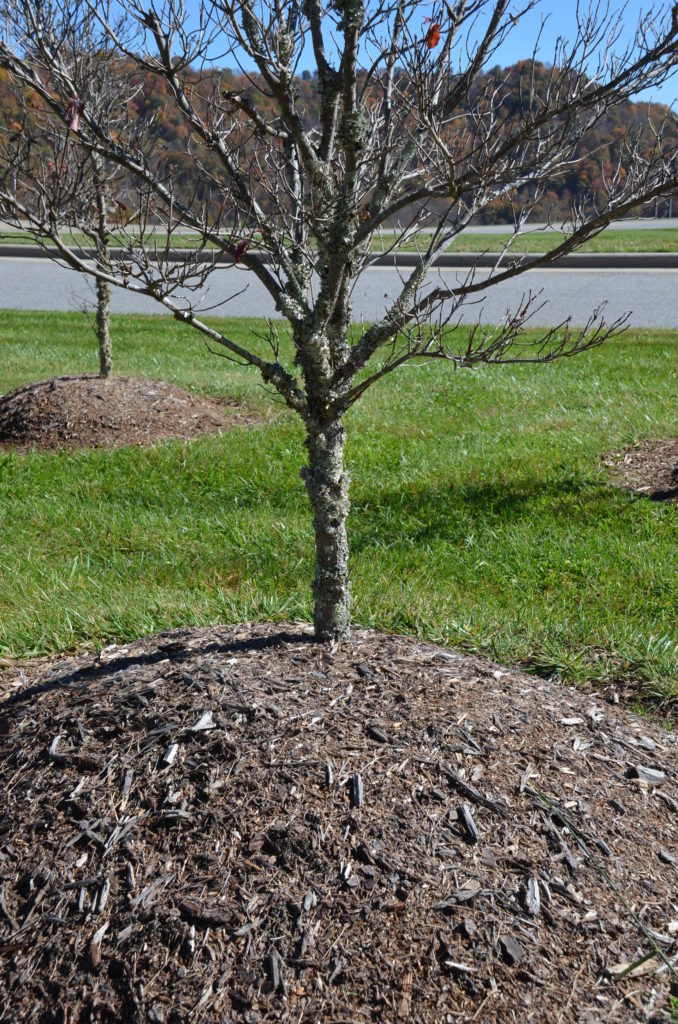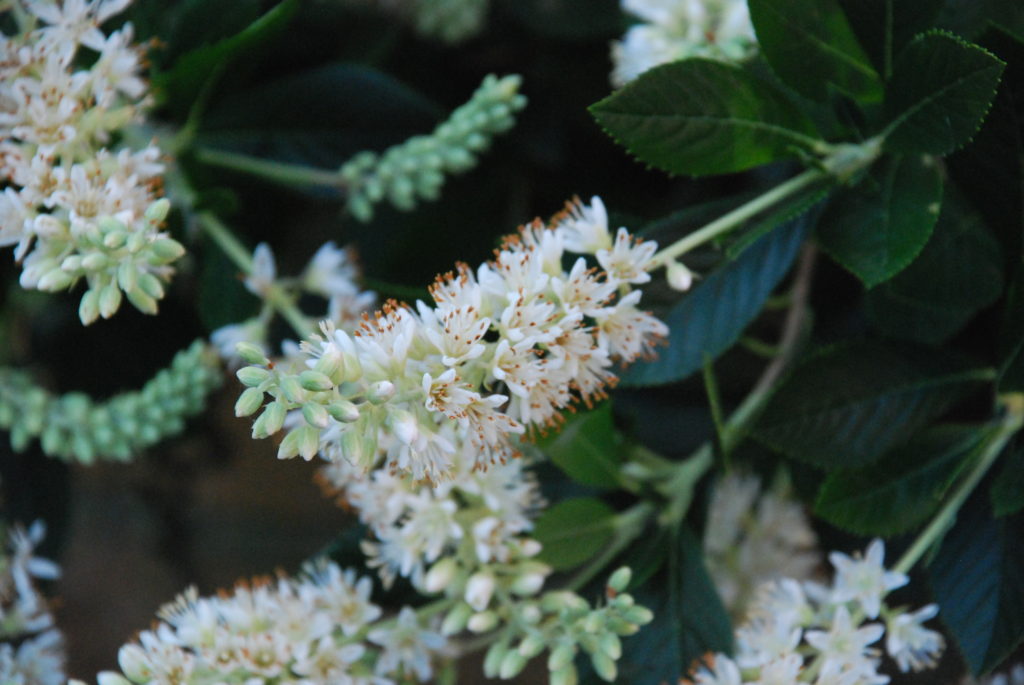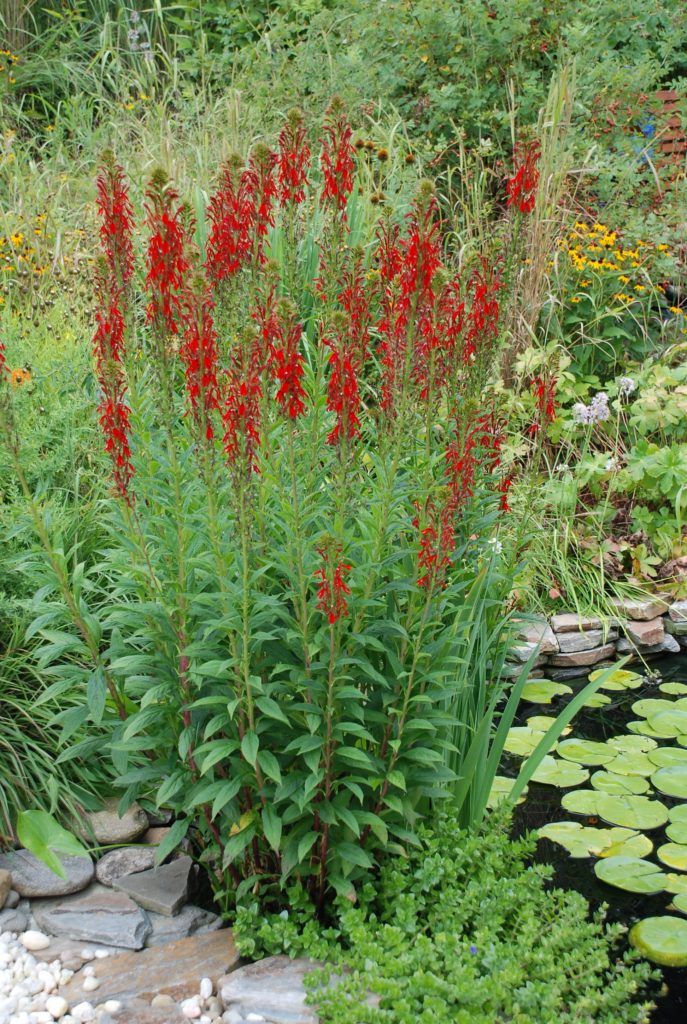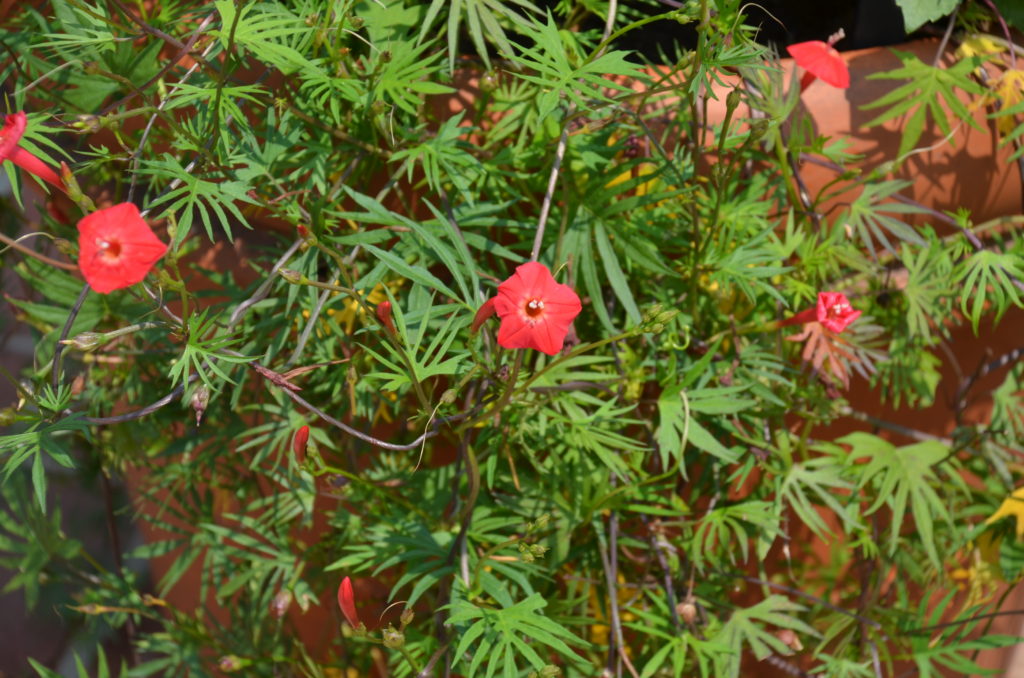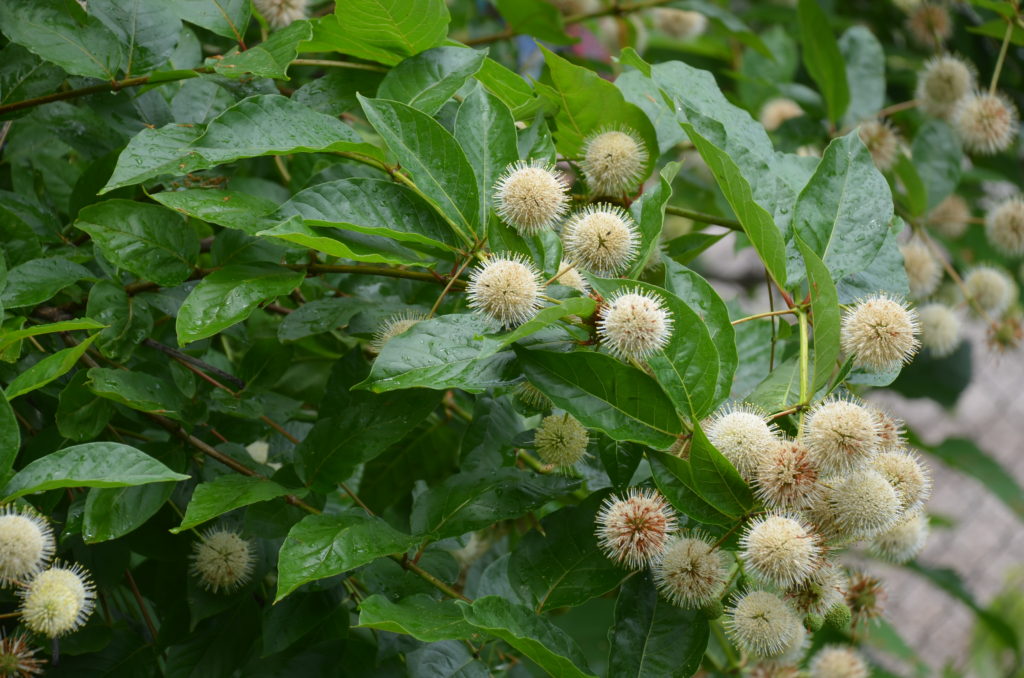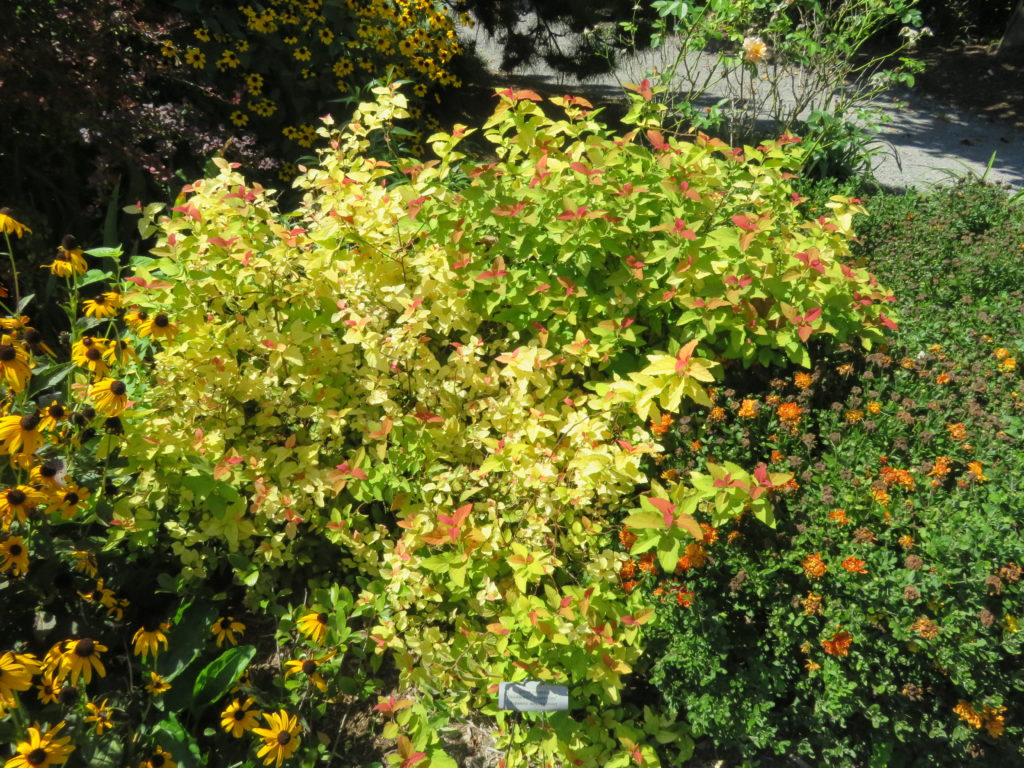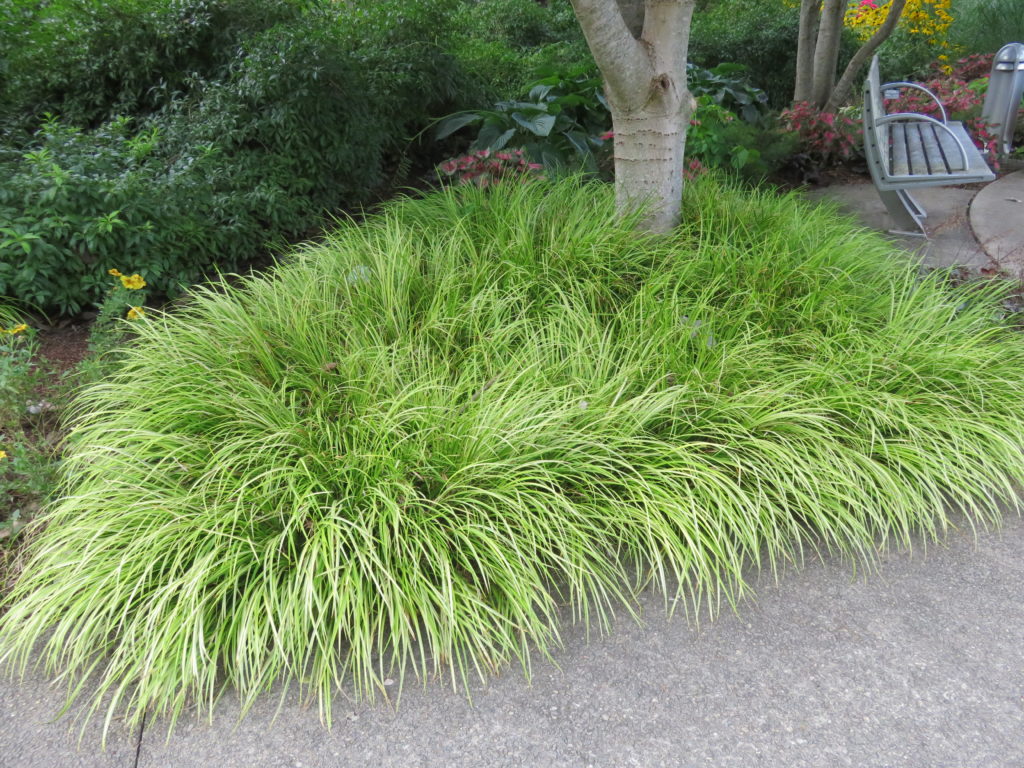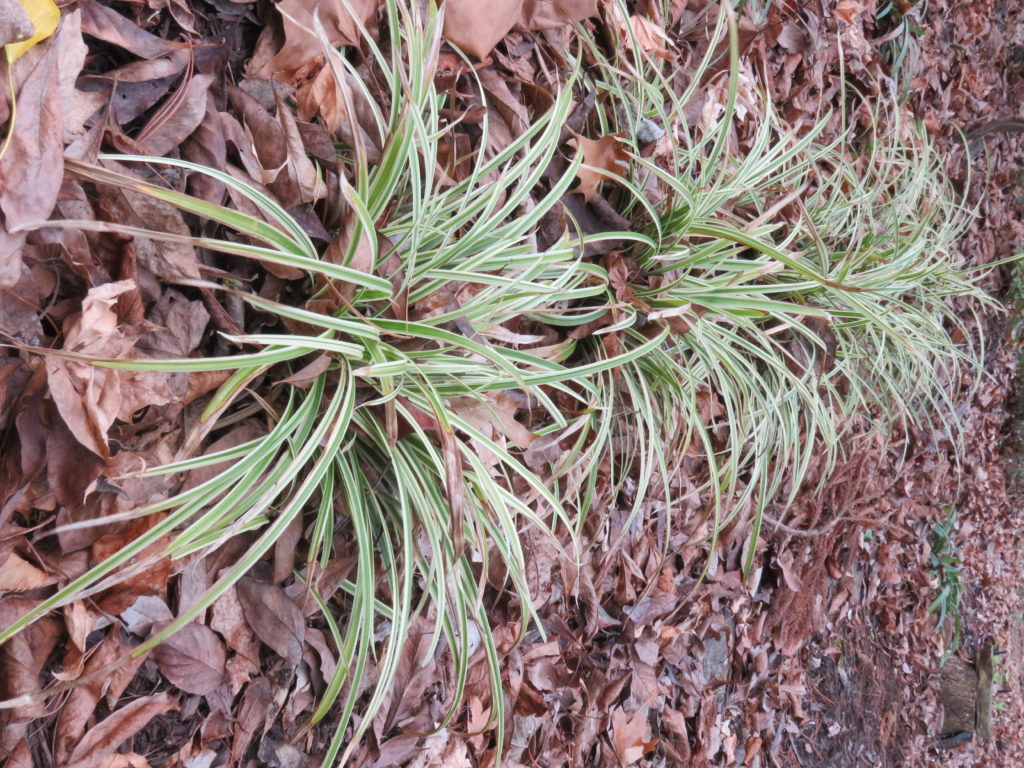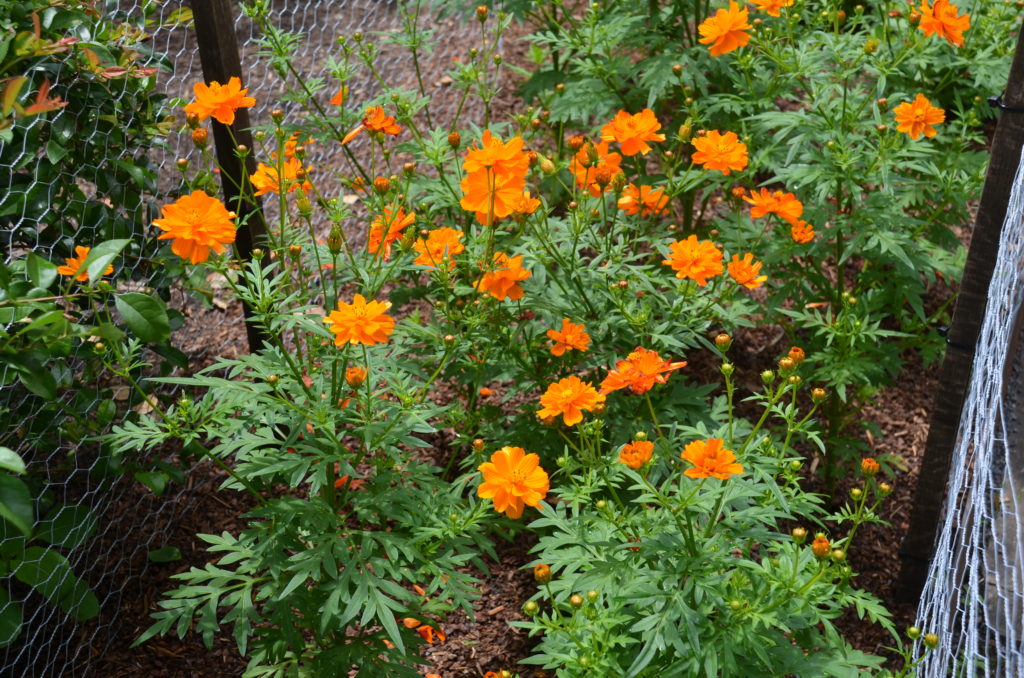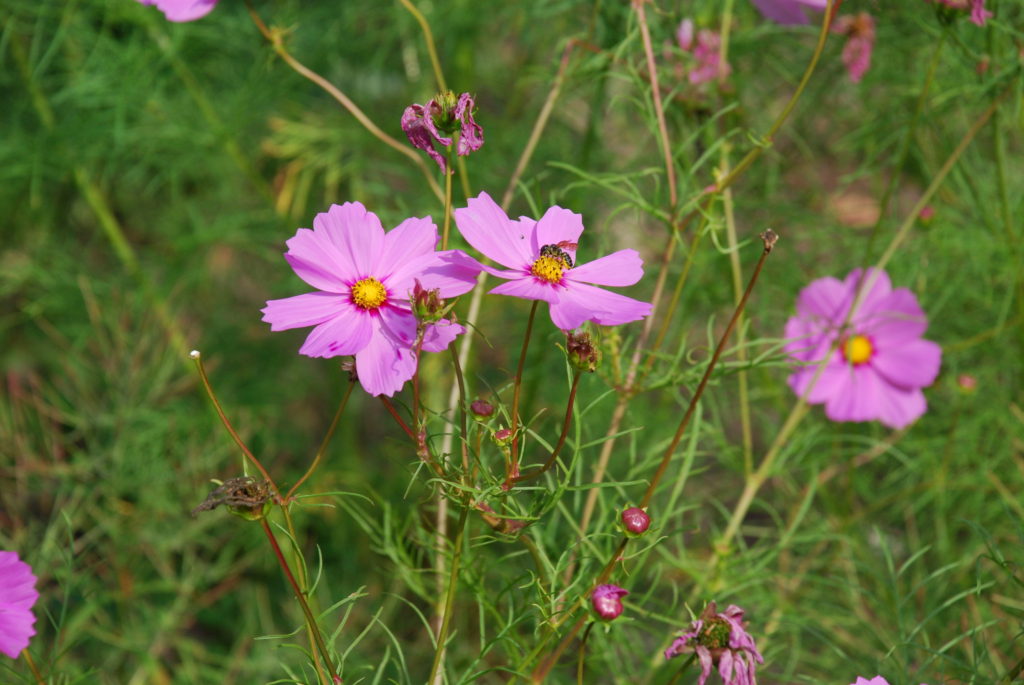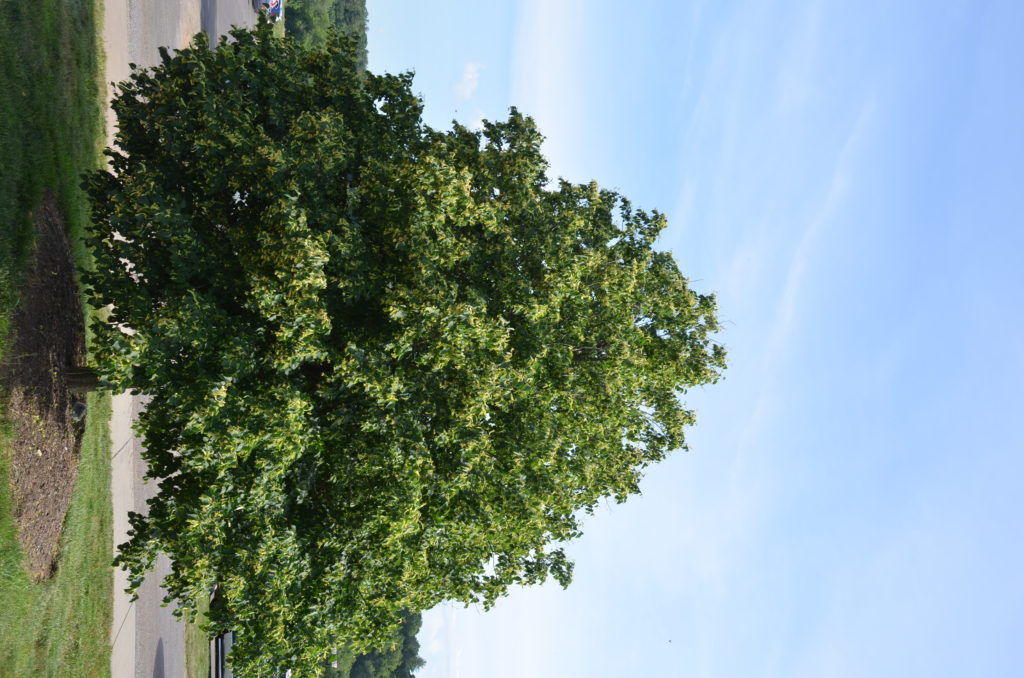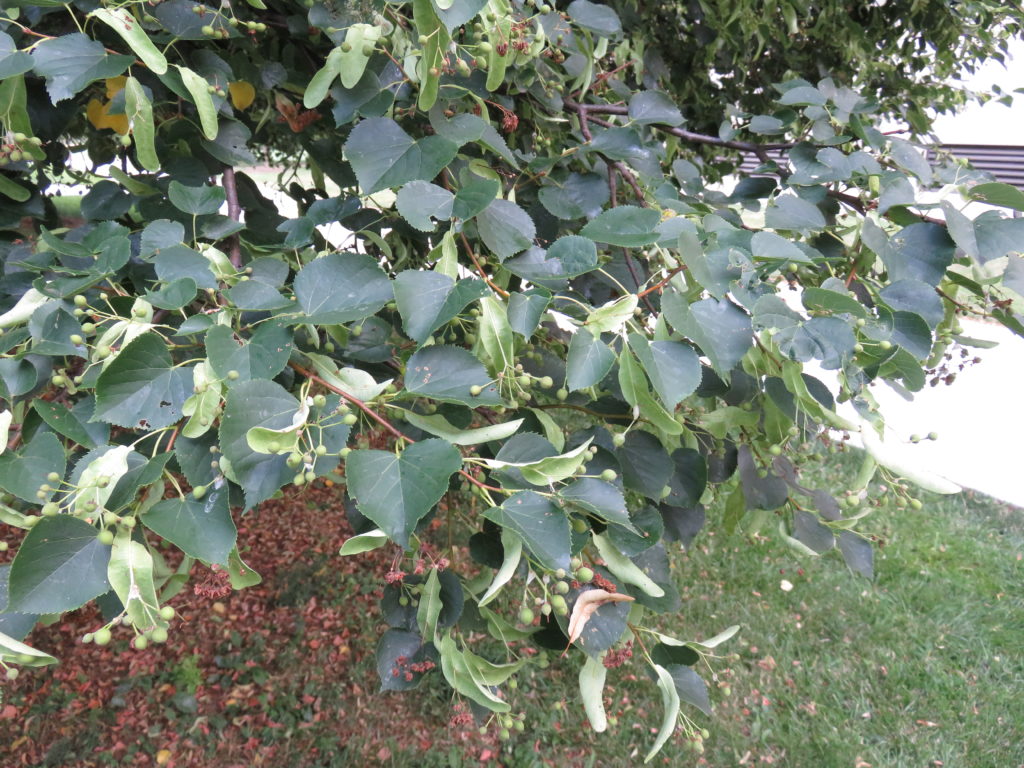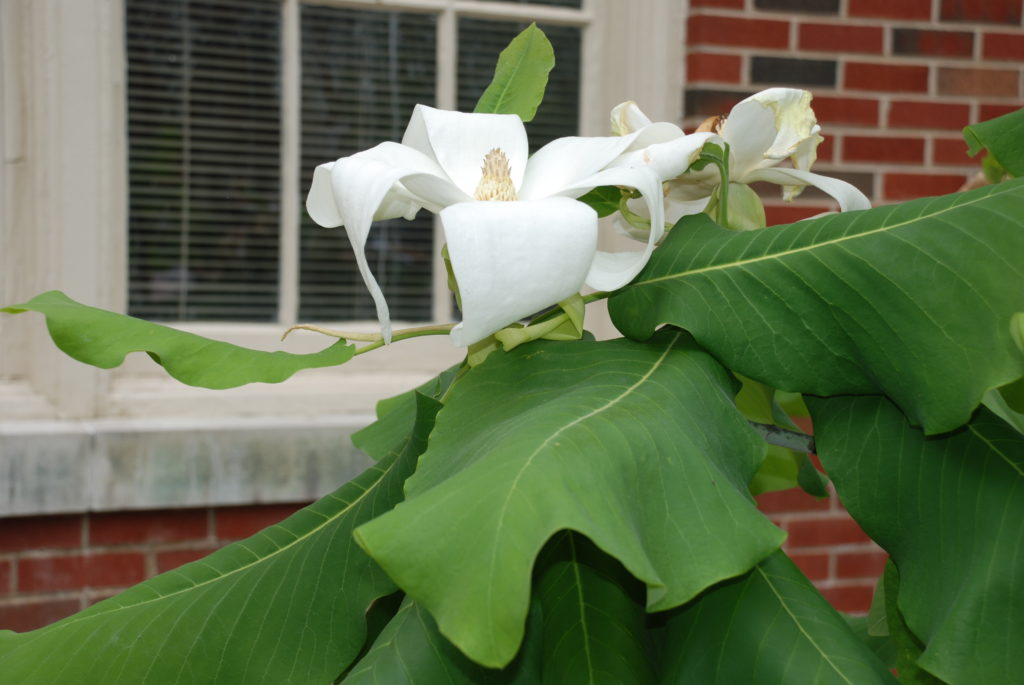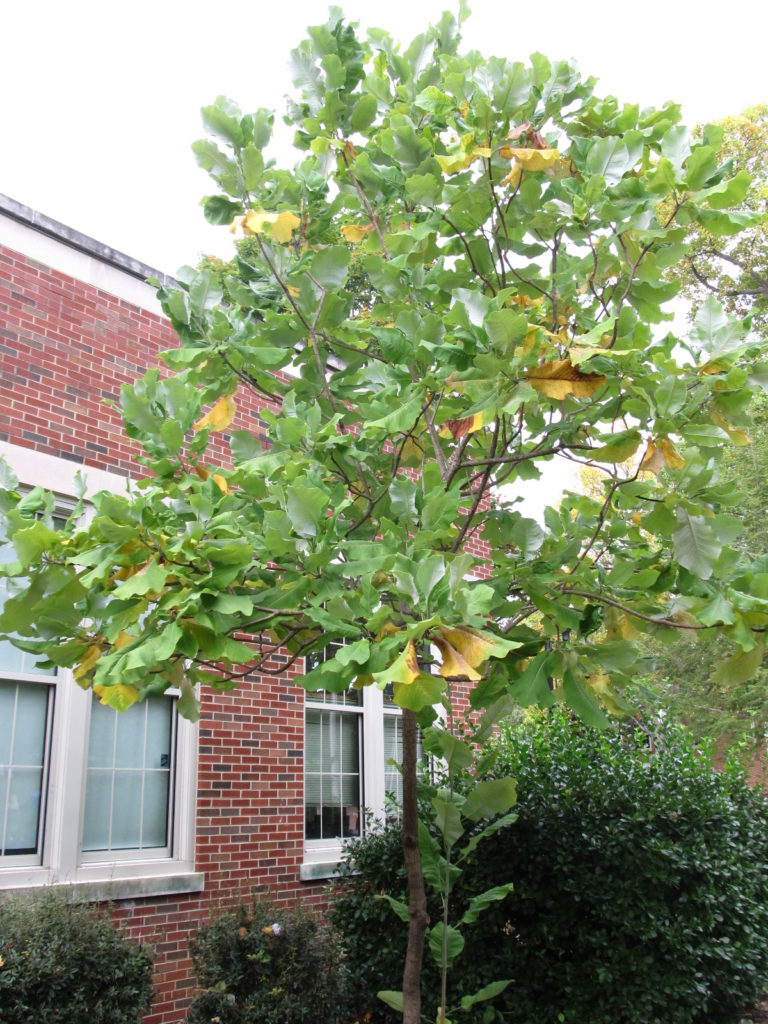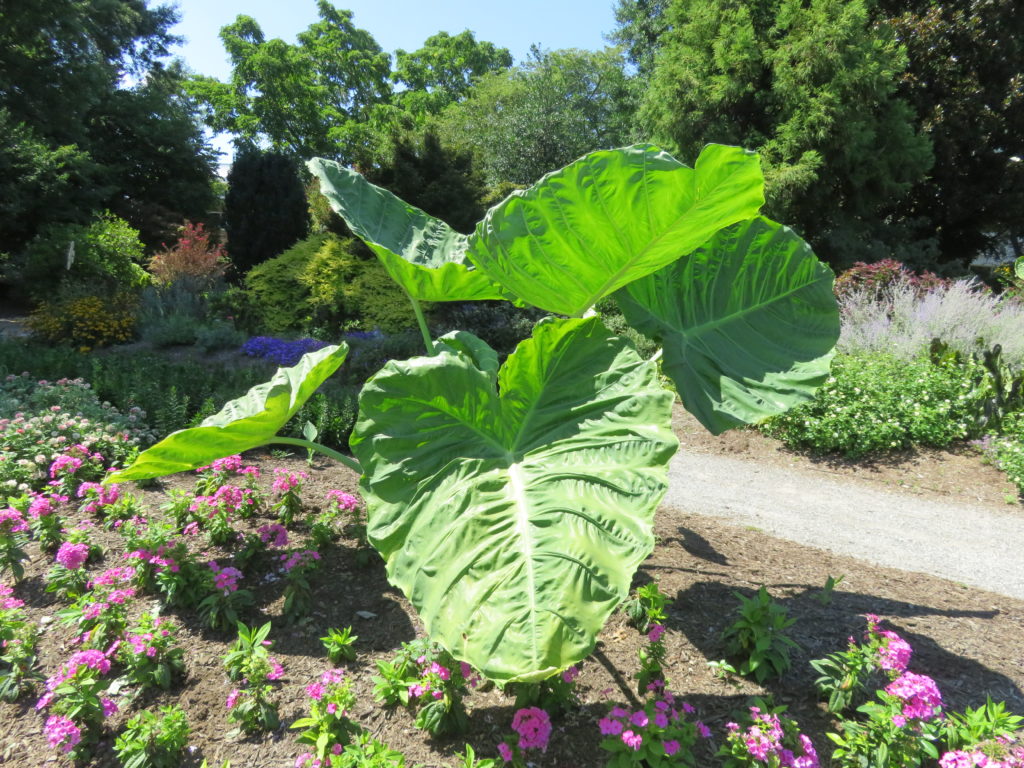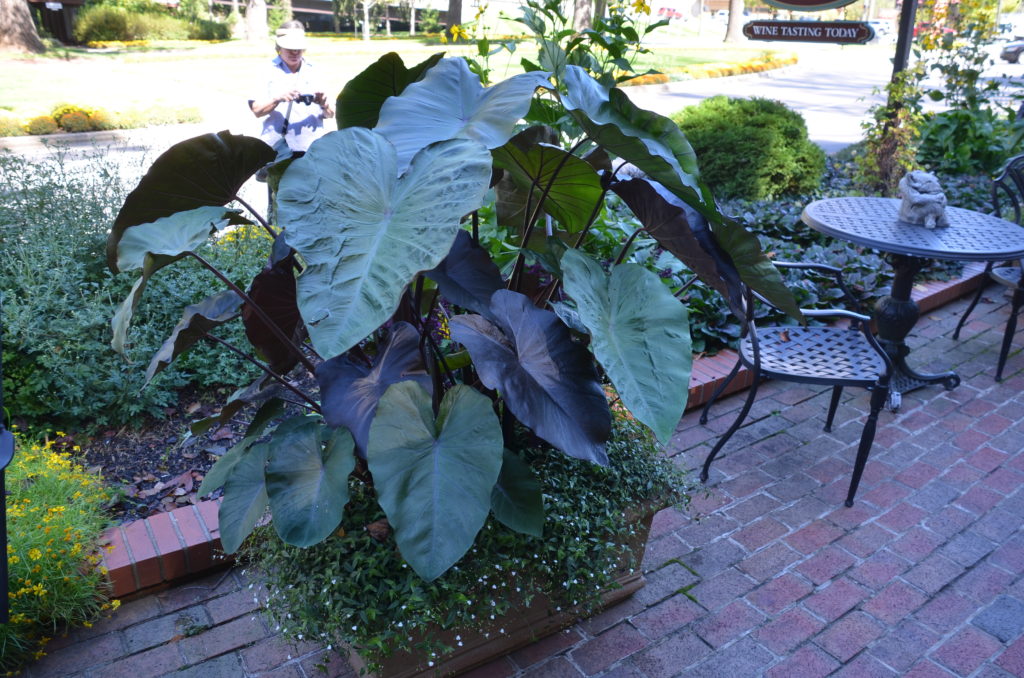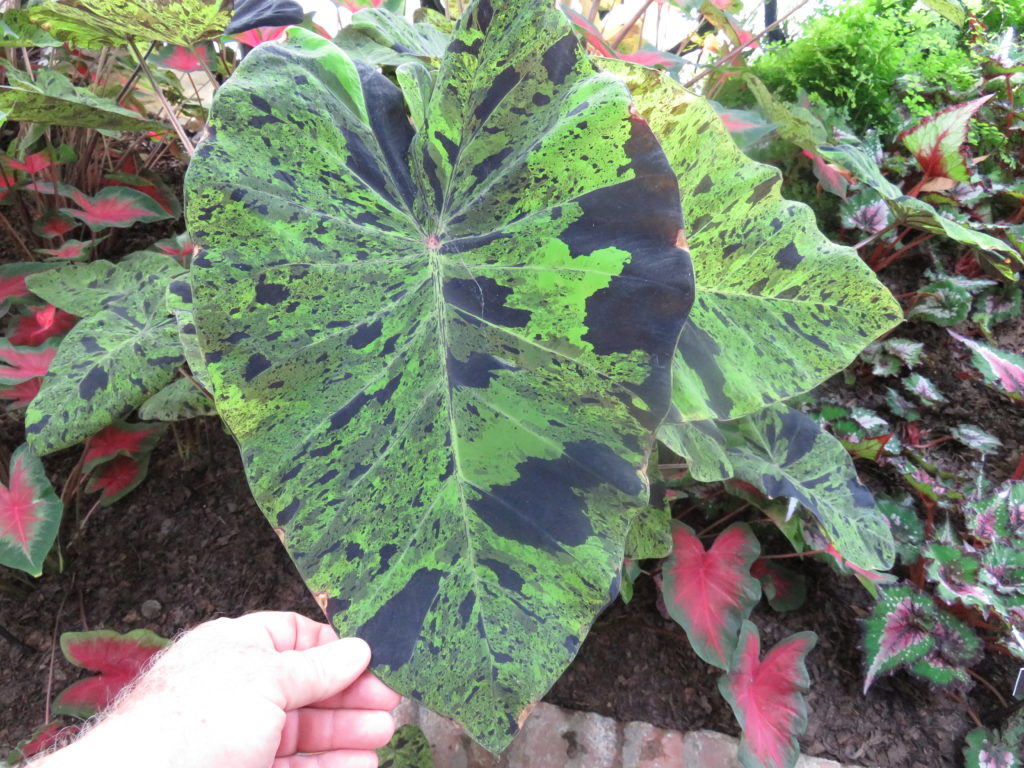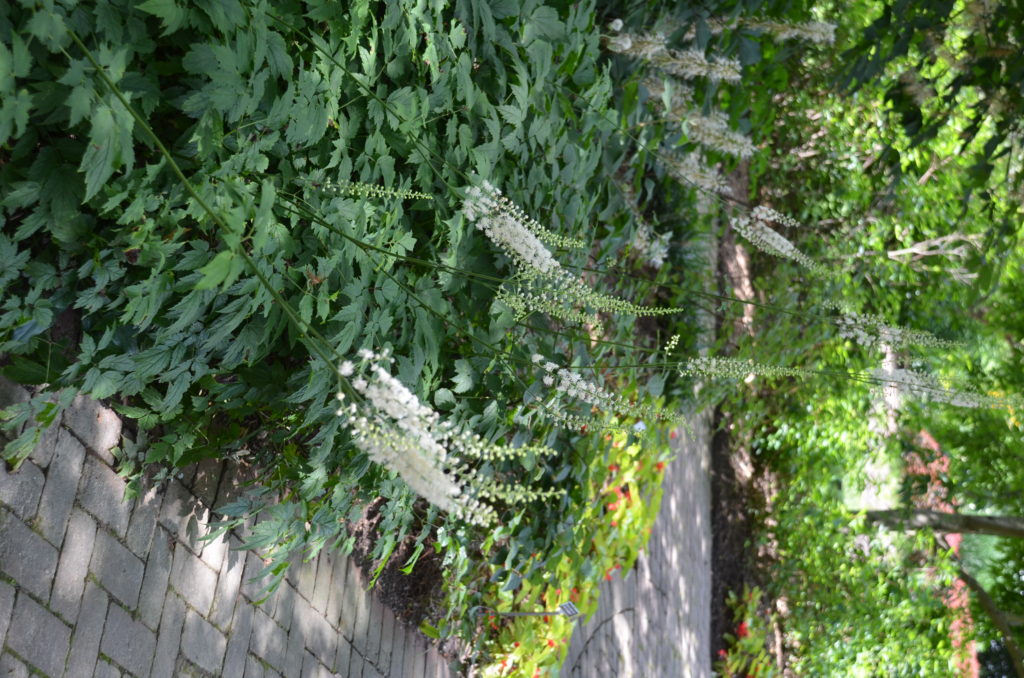
The bugbanes (Actae spp.) represent a varied botanical genus. In my opinion, the most attractive and easy to grow perennial form is black cohosh or snakeroot (Actaea racemosa), formerly (Cimicifuga racemosa). It is a tall growing U.S woodland native (USDA hardiness zones 4 – 8).
Bugbanes are beloved for their tall architectural floral spikes. Small, numerous, creamy white, fragrant flowers form on wiry stems. Tall floral spires (typically 1-2 feet long) arise above the foliage in June – July or in September depending on locality. Full height (foliage plus flowering spikes) is 4 to 6 feet, sometimes to 8 feet when the growing environment if ideal. Its lacy astilbe-like foliage may be either a deep green or dark purple, related to the cultivar chosen.
Bugbanes prefer rich moisture-retentive soils and partial to full shade. Abundant soil moisture is of key importance. Allow plants 1-2 years to establish after planting as bugbanes tend to be slow. Ideally, plants thrive in 2-3 hours of morning sun, although they prosper in shady areas where light is reduced. Flower spikes are less if soil is excessively dry and under dark shade. Plant in an area protected from strong and/or drying winds.
This plant offers a vertical floral look planted in the rear garden border or in a woodland setting. The leaves are attractive and the showy flowers are followed by cool seedheads, often utilized in floral arrangements. Flowers exude an unpleasant medicinal smell. It is attractive to wildlife.
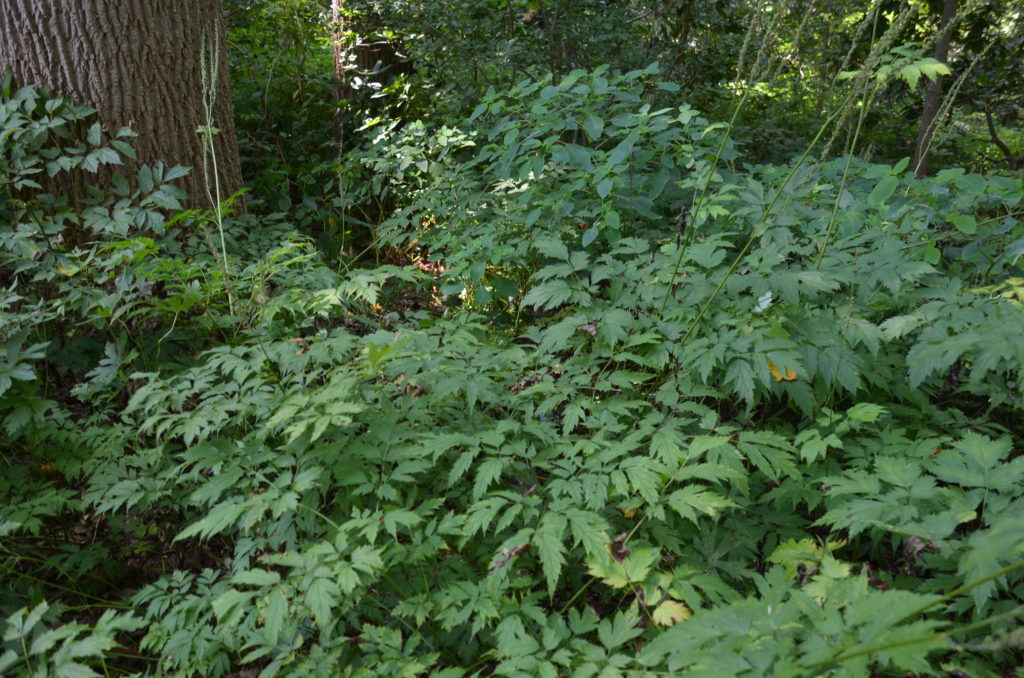
Disease and insect troubles are rare. Rust and leaf spot are occasional problems. The taller flower spires sometimes may require staking support. Flower spires tend to twirl directionally toward the morning – afternoon light source. Leaf edges may scorch in dry soil or under low humidity.
Cultivar: ‘Atropurpurea’ – purple foliage, dark tint in high light areas.
Actae pachypoda and Actae simplex are related species. Both are equally garden worthy.

